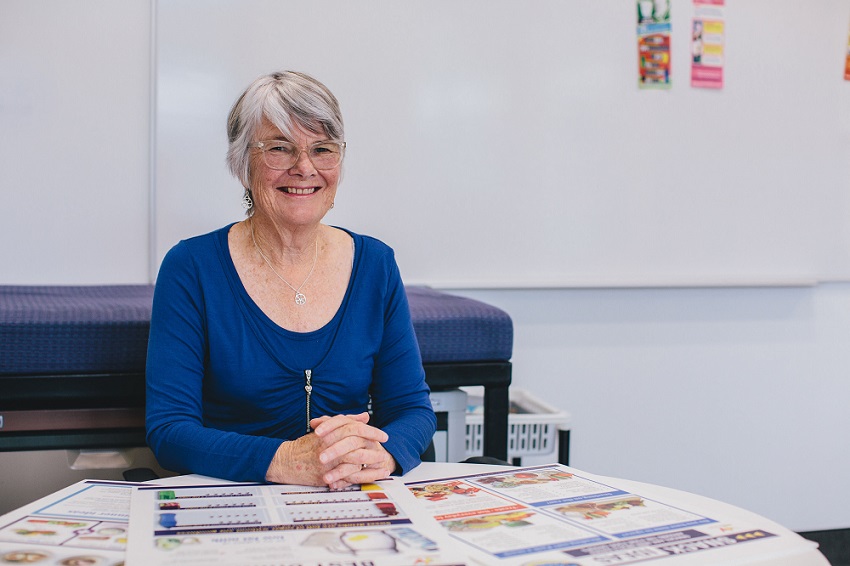Big bodies need big servings of 5+ a day

New study recommends greater variety and colour in food dietary guidelines, and serving sizes in direct proportion to body size.
The study, led by AUT Emeritus Professor of Nutrition, Elaine Rush, measured carotenoids (orange-coloured pigments) in the skin as a biomarker of vegetable and fruit intake.
Carotenoids (alpha carotene, beta carotene, lycopene, lutein and xanthophylls) are found in vegetables, fruit, eggs and dairy products. In the human body, they act as antioxidants and can be converted into vitamin A.
A non-evasive fingertip reading was administered using the Veggie Meter. The small optical device uses light reflection to measure the colour and intensity of carotenoids in the skin of the fingertip and generates a Carotenoid Reflection Score (CRS). Participants also completed a food frequency questionnaire.
The results of the study show a strong negative correlation between larger body size, by weight and BMI, and lower carotenoid status. An explanation for this may be that carotenoids are fat soluble and concentration in body tissues would depend on both the amount ingested and absorbed, and the volume of distribution.
In practical terms, a person weighing 100kg, with the same body fat as a person weighing 50kg, would require twice the amount of carotenoids to achieve the same tissue concentration.
“Food dietary guidelines need to emphasise the diversity of colours and kinds of vegetables and fruit required, and the quantity should be in direct proportion to body size,” says Professor Rush.
Almost 600 people, aged 16 to 85 years, participated in the study. There was a higher proportion of women. Overall, they self-identified as European (41 per cent), East Asian (17.3 per cent), Pacific (14.7 per cent), South Asian (12.6 per cent), Maori (6.7 per cent), and Other (7.7 per cent).
There was a positive correlation between carotenoid status and age. Older participants, aged 40 years and over, had higher scores than those younger. This may be related to the higher socioeconomic status of older people – that is, the ability to afford a greater variety and quantity of vegetables and fruit. They were also more likely to be European.
By ethnicity, the East Asian group had the highest carotenoid status and Pacific peoples had the lowest, which corresponded with their self-declared consumption of dark green leafy vegetables.
New Zealand has the ability to grow and market vegetables and fruit throughout the year, yet only 39.2 per cent of participants met the current recommendation of 5+ servings of vegetable and fruits a day. Their carotenoid status indicates that 80 per cent are at moderate to high risk of negative health outcomes.
“Improving access to fresh vegetables and fruit is an important public health issue that has long-term implications for the prevention of non-communicable diseases, including diabetes, stroke and heart disease,” says Professor Rush.
One way this could be done is to remove goods and service tax from vegetables and fruit.
New Zealand exports a large quantity of premium vegetables and fruit, which implies that there is no shortage of supply. An equitable, national, food policy that emphasises feeding the local population first should also be considered, she says.
The study, funded by the New Zealand Nutrition Foundation, was undertaken as part of the Bayer Food Focus Project, which aims to identify what Kiwis eat and support them in making healthy food choices.
Useful links:
Emeritus Professor of Nutrition, Elaine Rush
Veggie Meter (External link)
New Zealand Nutrition Foundation (External link)
Bayer Food Focus Project (External link)
Bayer Food Focus Survey (External link)